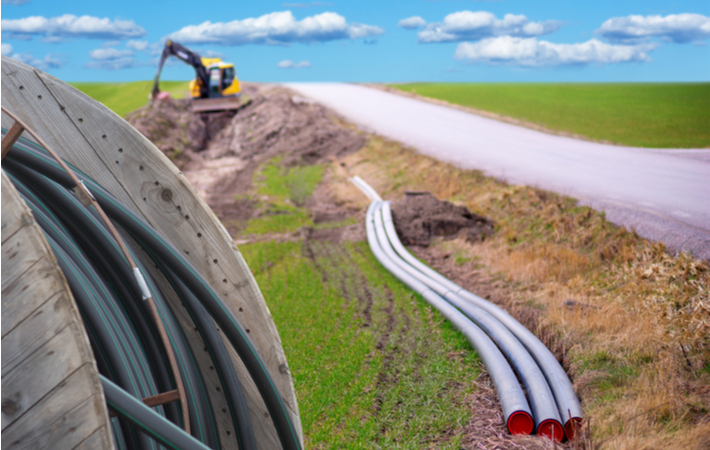The days of dial-up are behind us, but for many internet users in rural Alberta, it doesn’t feel that way. In urban centres, most people have access to high-speed internet from a variety of providers. In rural Alberta, however, that is not the case. Fewer than 13% of rural communities in Alberta have high-speed internet. In many areas, people end up paying more for worse services compared to those in urban areas.
What Is Fast & Reliable Internet?
Fast and reliable internet is high-speed and free of frequent interruptions. Internet speed is measured in megabits per second or Mbps. In Canada, the federal government considers 50 Mbps download and 10 Mbps upload speeds to be high-speed internet.
Reliability has no standard definition, but generally, reliable internet is internet that isn’t prone to interruptions or outages. Some types of internet are known to be better at providing fast and reliable internet than others.
Satellite internet, for example, isn’t considered reliable because it’s prone to inference, due to the fact that satellite internet signals are sent through the air rather than through physical cables. Cable internet also isn’t the most reliable option because although it’s sent through a physical cable, it’s made from copper, which is conductive.
Other internet types, like fiber internet, are much more reliable. Fiber internet isn’t prone to outages and has much faster speeds compared to satellite and cable internet. Unfortunately, fiber internet infrastructure isn’t available in many areas, especially rural areas.
Lack of Infrastructure
Many rural communities don’t have the infrastructure for fiber internet. Fiber internet requires specialized fiber optic cables, whereas cable internet can use the same copper lines used for telephones. Even where copper cable lines exist, these copper lines aren’t well maintained, worsening internet speeds and reliability further.

Some communities, however, don’t even have the infrastructure for cable internet. In these communities, people largely rely on satellite internet. Satellite internet is typically even slower than cable and much less reliable.
Low Populations
The main reason internet infrastructure doesn’t exist in rural areas? The population. There are fewer people in these areas who will buy internet, so internet providers have little incentive to build new infrastructure.
Often, laying internet cables is a project that can cost millions of dollars. If a community only has a few thousand or a few hundred people, it will take decades for telecoms to recoup that investment. Despite government incentives, many large telecoms are still hesitant to build the necessary infrastructure for better internet in rural communities.
Government Incentives
The Government of Canada has what they call Canada’s Connectivity Strategy. It’s an initiative from the Minister of Rural Economic Development to help provide rural communities with much-needed internet access.
Some leaders in rural communities are saying that internet is an essential service — much like water, electricity, and education — and should be treated as such. The Government of Canada seems to agree, saying that the lack of internet is the number one issue preventing economic growth in rural areas. As of 2019, the Canadian government has dedicated $6 billion towards universal connectivity.
That’s universal high-speed internet too, matching the government’s criteria of speeds of at least 50 Mbps download and 10 Mbps upload. What the government hasn’t specified is how rural communities will be getting faster, more reliable internet.
Is Fiber Internet the Answer?
By the end of 2021, the Government of Canada expects 90% of Canadian homes and businesses will have access to broadband speeds of at least 50 Mbps for downloads and 10 Mbps for uploads.
While that might be considered high-speed internet today, the government also acknowledges that internet demands will continue to increase. Rural communities not only need better internet speeds today, but they also need a scalable internet solution that will be adaptable over time.
Fiber internet has the potential to do both. Not only can fiber internet reach speeds of 1,000 Mbps for uploads and downloads, but it’s also the most scalable internet option. It has better speeds and bandwidth, making it a better option for internet today and tomorrow.
If you’re interested in faster, more reliable internet for your rural Alberta community, fill out our interest survey and let us know.




